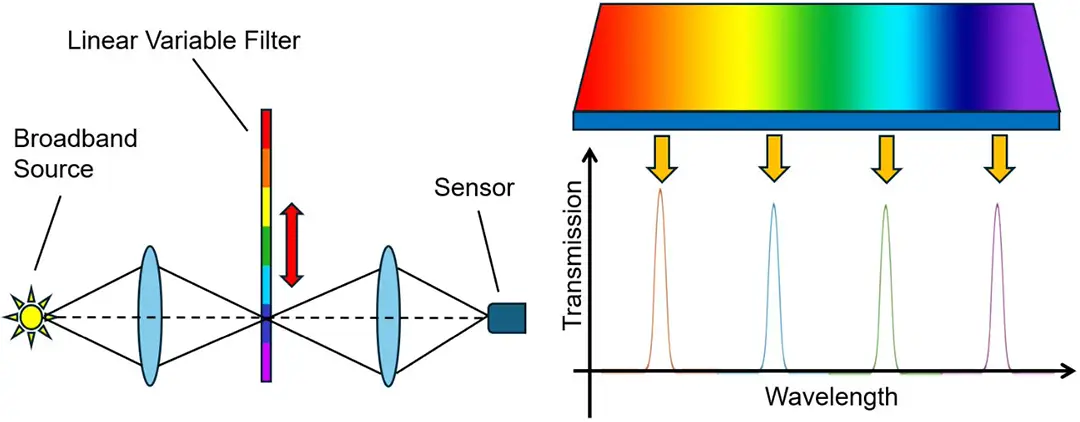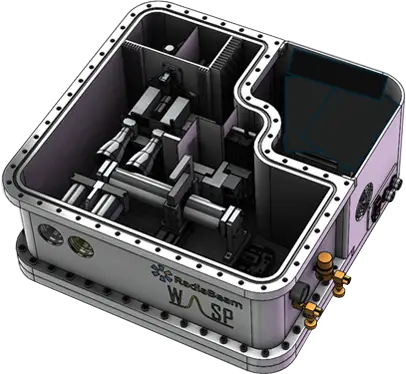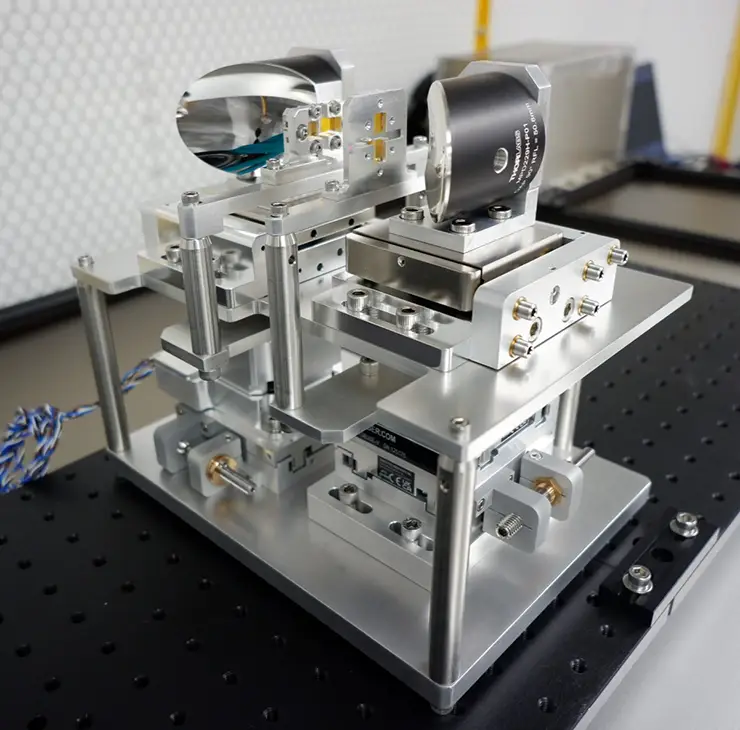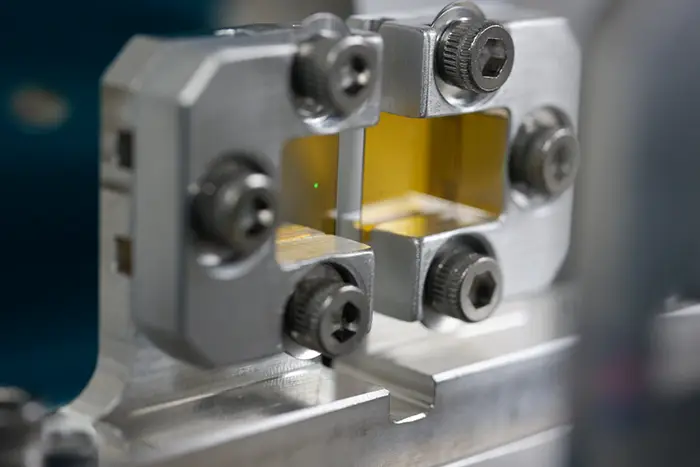PHOTONICS AND OPTICS
RadiaBeam’s ability to solve difficult research challenges innovatively, efficiently and on budget has made us go-to R&D collaborators for clients in both public and private sectors. We develop innovations in advanced photonics and optics for national defense, to calibrate optical elements, and for the worlds’ most advanced accelerators, to diagnose e-beams that are too fast for conventional methods.
Wideband Advanced Spectrometer Platform

CHALLENGE: FASTER CALIBRATION OF OPTICAL ELEMENTS AND DEVICES FROM THE UV TO THE LWIR
Rapid calibration and testing of broadband optical elements and devices like windowand sensors have been a challenging for defense and other applications because a different device was needed for each wavelength range in the spectrum. Result: inefficiency. So, we developed the Wideband Advanced Spectrometer Platform (WASP), a single device that covers the full spectrum from 200-14,000 nanometers, based on the use of Linear Variable Filters (LVF).

R&D SOLUTION:
A single spectrometer that covers all wavelength ranges from uv to lwir
WASP) spectral characterization and calibration instrument solves the problem replacing multiple devices with one compact unit. How? By simply using the LVF as a spectral scanner and dividing the wavelength range of interest with a spectral resolution up to 150.
WASP provides fast and reliable measurements in transmission mode for optical elements, and in calibration mode for larger systems like EO/IR cameras, using the two calibrated outputsportals. Our instrument will provide the developers in defense and commercial sensor applications with a complete and versatile optical measurement device. Other potential applications range from gaseous species identification to astronomy to medicine.
3-D e-beam position monitor
CHALLENGE: DIAGNOSIS OF SHORT-DURATION, HIGH-ENERGY ELECTRON BEAMS
Faster than a speeding e-beam
Direct analysis of electron beams is difficult as beams get more intense with smaller duration. Conventional methods are too slow to determine the position and duration in 3-D of high brightness electron beams in today’s most advanced accelerators. The electro-optic sampling approach in our 3-D monitor solves this problem.

R&D SOLUTION:
Nonlinear optical interactions
The RadiaBeam BPM (beam position monitor) is designed for the world’s most advanced accelerators. Built in collaboration with SLAC and the University of Colorado at Boulder, our innovative solution enables 3-dimensional characterization of the most intense, ultrashort electron beams by taking advantage of high intensity nonlinear optical interactions.

The secret to our femtosecond timing is in the crystals
The e-beam passes through the gap between the crystals in our monitor, changing the optical properties of the crystals without actually touching them. By analyzing an ultrafast laser pulse passing through the crystals at the same time, we’re able to infer what happened to the e-beam with great precision and femtosecond timing. Micro-scale spatial resolution and sub-100 femtosecond scale time resolution open new capabilities for two-bunch experiments, as well as optimizing accelerator-based light sources’ performance.

